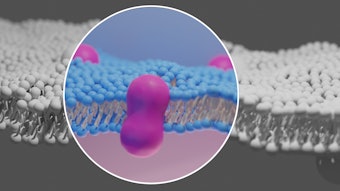
Hair loss has become a growing concern amongst both male and female patients, with it significantly affecting their quality of life. The use of topical minoxidil for hair loss, however, has presented difficulties in the form of patient compliance, irritation and ineffectiveness for certain patients. As a result, the use of low-dose oral minoxidil has emerged as a popular alternative for patients experiencing difficulties and a lack of results using topical minoxidil. However, while there have been smaller studies demonstrating the efficacy and safety of low-dose oral minoxidil for hair loss, the lack of larger trials has highlighted the need for consensus by industry experts on basic guidelines for its prescribing and monitoring.
Related: 4 Brand Partnerships Shaping the Aesthetics Industry Right Now: Hair Loss, AI in Skin Care & More
Expert Consensus Study on Guidelines for LDOM Use
This need for a consensus on guidelines resulted in a group of experts coming together this year to do just that. A modified eDelphi consensus of experts convened this year to develop guidelines the use of low-dose oral minoxidil for hair loss, forming key recommendations for LDOM prescribing and monitoring.
“Topical minoxidil is safe, effective, over-the-counter, and FDA-approved to treat the most common form of hair loss, androgenetic alopecia,” one of the study authors, Jennifer Fu, MD, reported in an interview with MDedge. “It is often used off label for other types of hair loss, yet clinicians who treat hair loss know that patient compliance with topical minoxidil can be poor for a variety of reasons,” she said. “Patients report that it can be difficult to apply and complicate hair styling. For many patients, topical minoxidil can be drying or cause irritant or allergic contact reactions.”
Dr. Fu added, “Given the current absence of larger trials on this topic, our research group identified a need for expert-based guidelines for prescribing and monitoring LDOM use in hair loss patients. Our goal was to provide clinicians who treat hair loss patients a road map for using LDOM effectively, maximizing hair growth, and minimizing potential cardiovascular adverse effects.”
The study involved 43 hair loss specialists from 12 different countries participating in multiple survey rounds focusing on the safety and efficacy of low-dose minoxidil, as well as proper dosing and monitoring of patient treatment. An initial survey was conducted using multiple choice, open-ended and Likert scale questions. The initial responses were then reviewed by the LOMI steering committee and feedback was given to an expert panel. This feedback was then used to create a modified survey for participants to complete. Three subsequent survey rounds were then calibrated for Likert scale responses, with a consensus reached only if a minimum of 70% of participants indicated “agree” or “strongly agree” on a five-point Likert scale.
Guidelines for Use of LDOM for Hair Loss
Per the final consensus statement, the final guidelines included:
Safety & Efficacy of LDOM
- Patient Populations: Adult (≥18 years) and Adolescent (12-17 years)
- Direct benefit: Androgenetic alopecia, Age-related patterned thinning, Alopecia areata, Telogen effluvium, Traction alopecia, Persistent chemotherapy-induced alopecia, and Endocrine therapy-induced alopecia
- Supportive benefit: Lichen planopilaris, Frontal fibrosing alopecia, Central centrifugal alopecia, Fibrosing alopecia in a patterned distribution
- LDOM vs. TX: LDOM can be considered when TX is more expensive, logistically challenging, has plateaued in efficacy, results in undesirable product residue/skin irritation, or exacerbates inflammatory process (i.e. eczema, psoriasis etc.).
- Contraindications: Hypersensitivity to minoxidil, significant drug-drug interaction with LDOM, history of pericardial effusion/tamponade, pericarditis, CHF, and pHTN associated with mitral stenosis, pheochromocytoma, and pregnancy/breastfeeding.
- Precautions: History of tachycardia or arrhythmia, hypotension, renal impairment, and patients on dialysis.
- Specialty Consultation: Only needed when potential precautions or contraindications are identified, or for coordination of care.
- Efficacy and Baseline Testing: The earliest time point at which LDOM should be expected to demonstrate efficacy is 3 to 6 months.Baseline testing is not routine but may be considered in case of identified precautions.
Monitoring of LDOM Treatment
- Monitoring: During initiation/escalation or with precautions, patients should be instructed to monitor for specific adverse effects including:
- Lightheadedness, dizziness, fast/abnormal heartbeat (secondary to vasodilation which occurs acutely and is dose-dependent; peak effect occurring within 3-7 days)
- Swollen feet/legs, facial swelling, weight gain, chest pain, or shortness of breath (which occurs subacutely/chronically, may be exacerbated by dietary salt intake, concurrent illness, and concomitant medications; may present within 4-6 weeks).
- Additional Agents: Possibility of co-administration with beta-blockers with specialty consultation and spironolactone in biologic female or transgender female patients with hirsutism, acne, PCOS, lower extremity and facial edema.
Prescribing of LDOM
- Most Frequently Prescribed Adult (≥ 18 years of age) Dosing:
- Adult female:
- Starting dose = 1.25 mg daily
- Dosing range = 0.625 mg to 5 mg daily
- Adult male:
- Starting dose = 2.5 mg daily
- Dosing range = 1.25 mg to 5 mg daily
- Most Frequently Prescribed Adolescent (12-17 years of age) Dosing:
- Adolescent female:
- Starting dose = 0.625 mg daily
- Dosing range = 0.625 mg to 2.5 mg daily
- Adolescent male:
- Starting dose = 1.25 mg daily
- Dosing range = 1.25 mg to 5 mg daily
- Titration and maximum dose: Patients tolerating current LDOM dose may discuss potential benefits and risks of a dose increase with their prescribing provider. Consider patient characteristics (sex, age, baseline hair loss severity, hypertrichosis, systemic adverse effects risk) for LDOM maximum dose.
“We hope that this consensus statement will guide our colleagues who would like to use LDOM to treat hair loss in their adult and adolescent patients,” Dr. Fu told MDedge. “These recommendations may be used to inform clinical practice until additional evidence-based data becomes available.”











